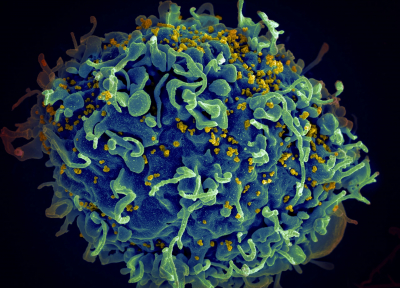Parts of the Immune System
Explore the many different organs, cells, and signals make up the immune system.
On This Page:
Overview
The immune system is made of many different organs and cells. All of these parts of the immune system work together as your body’s defense mechanism that helps to keep you healthy. This includes patrolling your body for anything that shouldn’t be there, like pathogens or cancer cells, healing injuries, fighting infections, and more. The immune system impacts every part of your body and components of the immune system can be found throughout your body.
Key Points
- There are many parts of the body involved in immune responses that protect you from infection and heal from injury.
- Many different types of cells work together to coordinate immune responses. They communicate with each other using different signals.
Anatomy of the Immune System
There are many different parts of the body that play a role in your immune health. Some of the key parts of the immune system are:
Bone Marrow – soft tissue inside your bones that serves a factory for producing cells, including important immune cells like B cells
Thymus – a small organ that filters the blood and produces T cells
Lymph Nodes – small structures that filter fluid in the body, where immune cells can identify and remove pathogens, damaged cells, and cancer cells.
Spleen – filters blood to remove pathogens and destroy damaged red blood cells, makes disease fighting components of the immune system like antibodies
Skin – a protective barrier that prevents pathogens from entering the body
Mucosal membranes – linings of the digestive, respiratory and reproductive systems that can capture pathogens in mucus
Cells of the Immune System
There are many different cells that help to keep you healthy. Some surveil the body looking for the disease, while other actively destroy pathogens. The cells of your immune system generally fall into two categories: cells of innate immunity and cells of adaptive immunity.
Cells of innate immunity:
Innate immunity is the body’s first line of defense, including immune cells that rapidly detect pathogens and kickstart the immune response. These cells don’t need training to determine the difference between things that belong in your body and those that do not.
- Neutrophils – the most numerous innate immune responder and type of white blood cell that fights infection by ingesting pathogens to kill them.
- Macrophages – a larger white blood cell that specializes in ingesting pathogens and other foreign substances in the body and sending signals to recruit other immune cells, which causes inflammation.
- Natural Killer (NK) cells – well known for fighting viruses and cancer cells, NK cells attach to infected or damaged cells and kill them.
- Dendritic cells – considered a bridge between innate and adaptive immunity, dendritic cells break down pathogens into parts and share those parts with adaptive immune cells informing the adaptive response.
Cells of adaptive immunity:
Adaptive immunity is the protection your body gains over time from exposure to pathogens. This branch of the immune system includes cells that recognize, eliminate, and remember previously encountered pathogens.
- B cells – develop in the bone marrow and are trained to produce antibodies to one specific pathogen; these cells can live a long time and remember previously encountered pathogens, allowing the body to respond quicker in the future.
- T cells – immune cells that mature in the thymus and can perform multiple roles like directly attacking infected cells or regulating the immune response. Different T cells include:
- T Helper Cells: oversee signaling that activates B cells and increases how well other immune cells work
- Cytotoxic T Cells: kill cells that have been infected by viruses
- Regulatory T Cells: help regulate the immune response by starting and stopping immune responses as needed
Signals of the Immune System
Your immune system does a lot and needs to communicate between its different cells to be successful. They do this through immune signals called cytokines.
Cytokines are signals that tell immune cells where to go and what to do. Over 50 cytokines have been identified so far and may overlap in function. The different immune cells vary in how particular cytokines affect them.
Together these cytokines tell cells how to work together to increase immune responses to an injury or pathogen, and then to turn off the immune response after the pathogen is eliminated or an injury is healed.
Sources
- Jain, A., Marshall, J., Buikema, A., Bancroft, T., Kelly, J. P., & Newschaffer, C. J. (2015). Autism Occurrence by MMR Vaccine Status Among US Children With Older Siblings With and Without Autism. JAMA, 313(15), 1534. https://doi.org/10.1001/jama.2015.3077
- Taylor, B., Miller, E., Farrington, Cp., Petropoulos, M.-C., Favot-Mayaud, I., Li, J., & Waight, P. A. (1999). Autism and measles, mumps, and rubella vaccine: no epidemiological evidence for a causal association. The Lancet, 353(9169), 2026–2029. https://doi.org/10.1016/s0140-6736(99)01239-8
- Madsen, K. M., Hviid, A., Vestergaard, M., Schendel, D., Wohlfahrt, J., Thorsen, P., Olsen, J., & Melbye, M. (2002). A Population-Based Study of Measles, Mumps, and Rubella Vaccination and Autism. New England Journal of Medicine, 347(19), 1477–1482. https://doi.org/10.1056/nejmoa021134
Related Topics
Downloads
External Resources
Latest News


